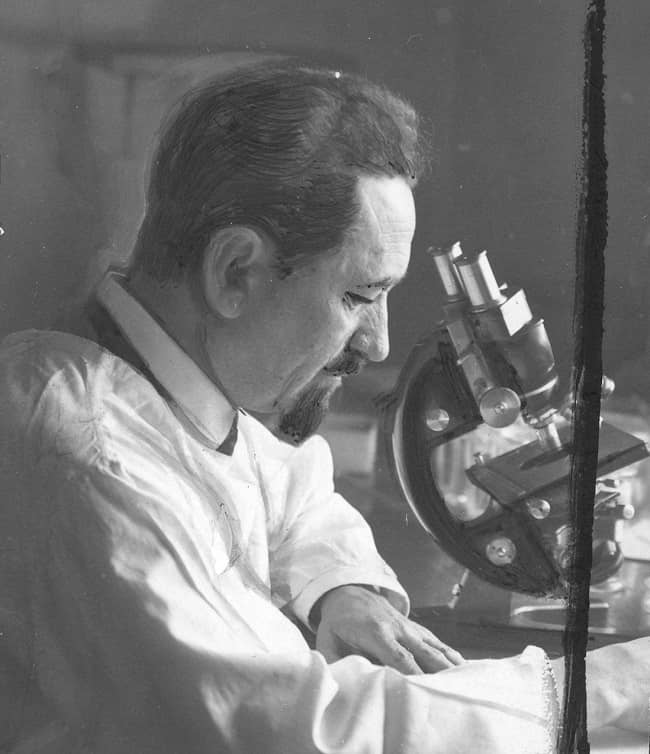Table of Biography
Rudolf Weigl was a Polish biologist, doctor, and inventor known for developing the first successful vaccination for epidemic typhus. Rudolf Weigl received nominations for the Nobel Prize in Medicine each year between 1930 and 1934, as well as from 1936 to 1939.
Early Life and Education
Rudolf Weigl was born Rudolf Stefan Jan Weigl on September 2, 1883, in Prerau, Austria-Hungary. His father lost his life in a bicycle accident while he was a little boy. Elisabeth Kroesel, his mother, wed Józef Trojnar, a secondary school teacher from Poland. Weigl was brought up in Poland’s Jaso. Despite being a native German speaker, he adopted the Polish language and culture once the family migrated to Poland.
Later, the family relocated to Lviv. In 1907, Weigl received his degree from Lwów University’s biology department after studying under Professors Benedykt Dybowski (1833-1930) and J. Nusbaum-Hilarowicz (1859-1917). Weigl worked as Nusbaum’s assistant after graduating, and in 1913 he finished his habilitation, which effectively gave him tenure. Histology, comparative anatomy, and zoology doctorates were later awarded to him.
Career and Professional Life
Rudolf Weigl started investigating the origins of typhus after being enlisted into the Austro-Hungarian army’s medical duty following the start of World War I in 1914. Weigl managed the Laboratory for the Study of Spotted Typhus at a military hospital in Przemyl from 1918 until 1920. He was elected to the Polish army’s military sanitary council in 1919. He created a vaccination when he started conducting research and conducting experiments.
Weigl kept on his studies and worked at a facility in Lwów after Germany conquered Poland in 1939. He was able to boost his typhus vaccine’s output there. Rudolf worked on creating a spotted fever vaccine for the following four years in Lwów. He oversaw and headed the Lwów-based Institute for Typhus and Virus Research. Weigl developed a spotted fever vaccination that significantly lessened symptoms but did not completely protect against the illness.
More…
Rudolf Weigl’s research caught the attention of the Nazis when they occupied Poland in World War II. He was instructed to establish a typhus vaccine manufacturing facility at his Institute when they conquered Lwów. For the facility, Weigl engaged a number of his Jewish friends and coworkers. About 2,000 Polish intellectuals, Jews, and members of the underground were hired by and protected by Weigl. He employed many of these individuals to help him with his typhus research and lice experiments.
Many of his Jewish friends mostly assisted in the growth of the lice in exchange for food, safety, and doses of the vaccine once it was ready. His vaccines were hidden in the Lwów and Warsaw ghettos, as well as other concentration camps and even certain Gestapo cells. Weigl was credited for saving almost 5,000 lives while the Nazis were in power.
Rudolf Weigl – Vaccine Development
Rudolf Weigl developed a method to create a typhus vaccine by growing infected lice and crushing them into a vaccine paste in 1930. He followed Charles Nicolle’s 1909 discovery that lice were the vector of epidemic typhus and the work done on a vaccine for the closely related Rocky Mountain spotted fever. He found that lice stomach infected with Rickettsia prowazeki, the organism that causes typhus in humans, could be used to create a vaccine.
In 1918, he started working on the first iteration of the vaccine and started conducting tests on rats and even healthy human volunteers. Over the years, he improved this method, and in 1933, he carried out extensive research to produce bacteria and experiment with lice using a micro-infection strategy. The process included four main steps:
- Growing healthy lice for around 12 days.
- Giving them typhus injections.
- Continuing to grow lice for an additional 5 days.
- Removing the midguts of the lice and making a paste out of them (this was the vaccination).
More…
The more human the blood, the better for growing lice. His technique was initially tested on guinea pigs. But in 1933 he started conducting extensive experimentation on people, giving the lice human blood by allowing them to suck human legs through a screen. In the latter stage, when the lice are infected, this can result in typhus. He solved this issue by giving the human “injected” vaccines, which effectively prevented them from dying (although some did go on to contract the illness). Some of the first lice feeders included Weigl and his wife Zofia Weigl. He caught the illness but recovered.
Belgian missionaries working in China between 1936 and 1943 carried out the first significant use of his vaccination. The vaccinations were soon also given throughout Africa. The vaccine was difficult to manufacture on a big scale and dangerous to prepare. Other vaccinations that were less harmful and cost more to produce over time were created, such as the Cox vaccine made from egg yolk.
Achievements
In the years 1930–1934 and 1936–1939, Weigl received nominations for the Nobel Prize on a regular schedule. Despite these nominations, he was never awarded the Nobel Prize for his contributions to vaccine research or social work.
Rudolf Weigl’s study, effort, and dedication were appreciated by many people even 50 years after his passing. He received the distinction of Righteous Among the Nations in 2003. His efforts to save several Jewish lives during World War II were recognized with this honor by Israel. Google released a Google Doodle in honor of Weigl on September 2, 2021, his 138th birthday.
Personal Life
Rudolf Weigl relocated to Kraków in southern Poland after the war’s border adjustments. At Jagiellonian University, Rudolf Weigl was named chair of the General Microbiology Institute. Later, at the University of Pozna, he was named chair of biology in the medical department. Although he retired in 1951, his vaccination was nevertheless produced for several more years.
Moreover, he was a married man. He had tied the knot with Zofia Weigl in 1921. However, there is no exact information about their wedding and married life.
At the age of 73, Weigl passed away in the Polish mountain resort of Zakopane on August 11, 1957. He was laid to rest in Kraków’s revered Rakowicki Cemetery. The typhus research department at Lwów University established the Weigl’s Institute for his typhus study and work. The Third Part of the Night, a 1971 movie by Andrzej Uawski, gives the institute a lot of screen time.
Rudolf Weigl – Net Worth 2024
Rudolf Weigl was one of the hardworking and successful Polish biologists. He had earned a decent amount of money throughout his career. He had a net worth of $1 million at the time of his death.
Social Media and Body Measurements
Rudolf Weigl wasn’t active on any social media sites like Facebook, Instagram, Twitter, and so on. There was no use of these social media platforms throughout his lifetime.
Similarly, the details about his height, weight, dress size, shoe size, and so on are also not available. However, looking at his pictures we can assume that he had a pair of black eyes with black hair. He was a bearded man.



